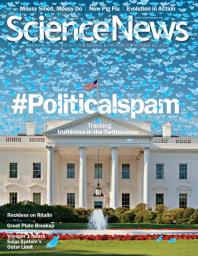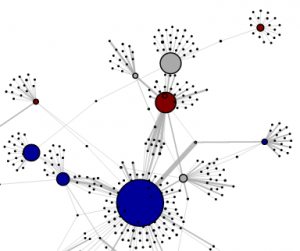

Research by our Truthy team was recently featured in New Scientist, USA Today, and the cover story of Science News. The Truthy project, developed by CNetS researchers and doctoral students, aims to study the factors affecting the spread of information — and misinformation — in social media.
The Truthy site charts tweet sentiment and volume related to themes such as social movements and news. It also monitors Twitter activity to build interactive networks that let visitors visualize the diffusion networks of memes, identify the most influential information spreaders, and explore those influential feeds and other information about their online activity, such as sentiment and language. Other tools let you map the geo-temporal diffusion of memes, generate YouTube movies that display how hashtags emerge and connect, and download data directly from Twitter. With these analytics, one can begin to ask question such as: How does sentiment change in response to events and memes? What memes survive over time? Who are the most influential users on a particular topic?
For more press coverage go to the Truthy press page.